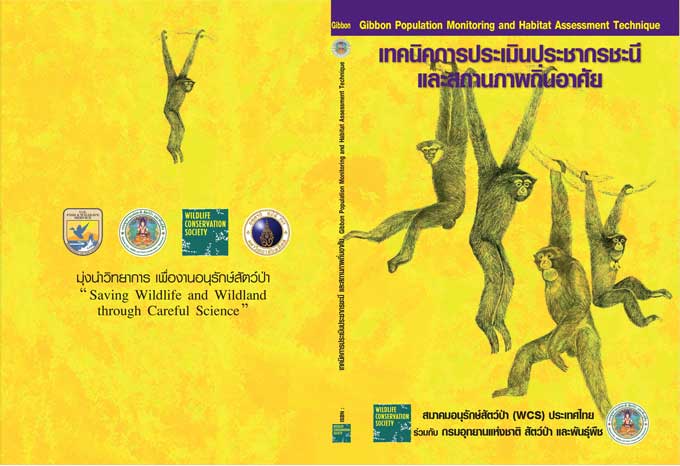
Wildlife Conservation Society (WCS) Thailand Program in collaborative of field researchers and officers fromDepartment of National Parks, Wildlife and Plant Conservation and Professor Warren Y. Brockelman, a senior specialist from Mahidol University and National Center for Genetic Engineering and Biotechnology (BIOTEC) who had been studying about gibbon biology for over 20 years, initiated the Conservation of Agile Gibbon (Hylobates agilis) and Siamang (Symphalangus syndactylus) in the Halabala Forest Complex, Southern Thailand project to survey the population, distribution, density, and threats of Agile gibbon and Siamang which are endangered and rare species in the region.
Key Person
- Dr. Anak Pattanavibool
- Dr. Warren Y. Brockelman
- Ms. Siriporn Thong-aree
- Mr. Suwat Kaewsrisuk
Period : October 2004 - May 2005
Objectives
- To settle a monitoring system of Agile gibbon and Siamang, the endangered and rare gibbon species found Halaba Forest Complex in the Southern Border of Thai-Malaysia.
- To measure the Halabala forest complex' s effectiveness as an endemic habitat for Agile gibbon and Siamang
- To strengthen conservation awareness to the local people and students through wildlife and forest.
Goals
Halabala Wildlife Sanctuary and Halabala Wildlife Research Station have an effective and standard monitoring system of Agile gibbon and Siamang as a sign for further wildlife and forest conservation effort, as well as to encourage people awareness and on take part on the conservation of local wildlife and forest.
Progress & Activities
There are 2 activities conducted during the approve periods as following:
Methodology
The training workshop held for 15 participants comprised of rangers from Halabala Wildlife Sanctuary and officers from Halabala Wildlife Research Station, and instructed by gibbon specialist from Mahidol University, Dr. Warren Brockelman. The training workshop took place during April 16 - 24, 2005
Participants
Halabala Wildlife Research Station in Halabala Wildlife Sanctuary under Department of National Parks, Wildlife and Plant Conservation and the Faculty of Science,? Mahidol University
Result
The relevant researchers and officers understand both in principal and practical about the survey and data collection process, and able to handle the field research equipments supported by the project.
2. Monitoring of Agile gibbon and Siamang Distribution & Density in Halabala Forest Complex
Methodology
2.1 Using random survey grid and Listening post (LP) in ratio 1:4 for the survey of gibbon's location and amount of herd. The survey grids were selected disperse throughout the Halabala forest area. Gibbon's call data were collected at specific times.
2.2 Data collected from 2.1 were contributed to create distribution map of each species
Participants
Halabala Wildlife Sanctuary and Halabala Wildlife Research Station under Department of National Parks, Wildlife and Plant Conservation